
One of the siren songs raised in favor of moderate and establishment-backed candidates every primary election season is that they are “electable” and their opponents are not. Sometimes, this is frankly code for “not like those conservatives.” But if the idea that conservatives are unelectable is a fallacy, so too is the reflexive assumption that any candidate described as “electable” is actually the opposite, or is not any sort of conservative. History reminds us that good candidates win and bad ones lose, and while ideology can matter more or less depending where and when the election is held, neither conservatives nor moderates have any monopoly on winning elections. And if you look at the history of failed GOP “electability” candidates, you will find that they were usually moderates who faced significantly weaker and/or non-conservative opponents.
Let’s take a two-part walk through the history of electability arguments, starting with a review of the GOP primaries from 1948 to 2012. In the second part, I’ll look at statewide swing-state races over the past decade to consider what kinds of Republican candidates actually do win contested elections.
Electability in the GOP Presidential Primaries, 1948-2012
The Republican Party’s internal conservative/moderate divides go back to the era of William McKinley and Teddy Roosevelt, but we can first see them play out in something like public presidential nominating contests in the post World War II era, and they flowered much more dramatically after the primary system was handed over to 50-state popular vote campaigns in 1976.
1948: Dewey v. Taft
In 1948, the GOP faced a choice between two main candidates: moderate New York Governor Tom Dewey and conservative Ohio Senator Robert Taft. They were not actually the top two vote-getters in the primaries (those were liberal Republicans Harold Stassen of Minnesota and Earl Warren of California), but the process was different in those days (Warren ran only in California, where he was unopposed). Both had been jockeying for the nomination since 1940. Dewey, a 46 year old former Manhattan prosecutor, embodied the Eastern establishment of the day, and had been the nominee in 1944; he got 45.9% of the vote, not an impressive result to our eyes today but the best showing by a Republican since Hoover in 1928. Taft, a 59-year-old foe of the New Deal known for his anti-interventionist foreign policy, was known as “Mr. Conservative” and drove the legislative agenda of the Republican Congress elected in 1946.
Republicans picked Dewey, after a late charge from Stassen, with Warren as his running mate. On paper, this seemed like a savvy choice on electability grounds; Dewey had been the first candidate since 1892 to win Ohio without winning the election, he had just won re-election by a historic margin in New York, and with the New York-bred FDR gone and replaced with Harry Truman – a scrappy Missouri populist without a college education – it was rational to believe Dewey could finally break the Democrats’ hold on New York and the Northeast. It was a golden opportunity, given that the Democrats faced defections on their left (former Vice President Henry Wallace running third party as a Progressive) and right (Dixiecrat Senator Strom Thurmond would carry four states in the Deep South).
That part of the plan worked: Dewey won New York (47 electoral votes at the time), Pennsylvania (35), New Jersey (16), and 19 other electoral votes in Connecticut, Maryland and Delaware, plus Michigan (19) and Oregon (6). Added to his 1944 tally, that was enough to beat Truman – but Truman won back Ohio (25 electoral votes), Wisconsin (13), Iowa (10), Colorado (6) and Wyoming (3), all of them Dewey states in 1944, and won the election. Here’s the 1944 and 1948 maps, with Republicans in blue:

Would the GOP have been better off forgetting electability and going with Taft? It’s unknowable – on the one hand, the post-incumbent dynamic may have been blunted by the GOP re-running 1944’s loser, but on the other hand, Taft would probably have fared better in the Midwest, but may not have been able to compete with Dewey’s appeal to the Democrat-held Northeast. As it happened, Truman ran much of his campaign against the Republican Congress, and Taft was the architect of its agenda and out of step with much of the country on foreign affairs. Dewey and Taft were both serious and accomplished men with distinct appeals, but neither was that charismatic – Dewey was aloof and arrogant, Taft colorless and dull. The Republicans of 1948 lost with the “electable” moderate, but they would probably have exchanged one set of problems for another with the conservative purist.
1952: Ike v. Taft
Taft ran again in 1952, but he ran into the ultimate in “electability” candidates, Dwight Eisenhower. Like Hoover and Zachary Taylor before him, Ike was so popular and his views so unknown that both parties tried to recruit him to run (Republicans had been flirting in 1944 and 1948 with Douglas MacArthur, a more conservative war hero choice). After four straight losses with men in their 40s, the party was desperate for a win and ready for a more mature candidate to promise a resolution to the Korean War; Taft was 63, Ike 62. The party picked the national war hero Eisenhower – due in good part to the support of Warren at the convention – and he lived up to every promise of electability. He won every state outside Kentucky, West Virginia and the Deep South. He easily carried his birthplace of Texas, which Dewey had lost by 41 points; Hoover in 1928 was the only prior Republican to win Texas. He won Virginia, which had likewise been won only once (by Hoover) by a Republican since Reconstruction; Democrats would win it only once (LBJ in 1964) between 1952 and 2004. He similarly broke through in Tennessee, starting the process of eroding the Solid South from three directions. He expanded his reach to Kentucky and West Virginia in 1956. His Vice President would go on to be a two-term President. Sean Trende, in The Lost Majority, would rate Ike’s presidential coalition the most durable in American history, lasting through the last Cold War election in 1988. And while the party could not have known this in 1952, Taft would be diagnosed with cancer just 3 months after Eisenhower was inaugurated, and dead of it in July 1953.
At what cost? Eisenhower’s more internationalist view of the Cold War, mostly adopted by Nixon, Goldwater, Reagan and H.W. Bush, seems vindicated by history; even many conservatives who want a more Taft-like approach today would blanch at applying it to the Cold War. But in domestic policy, the moderate Eisenhower put Warren and William Brennan on the Supreme Court and validated much of the New Deal that Taft had battled.
1964: Goldwater v. Rockefeller
Aside from incumbents, the only post-WWII elections to feature no real contest for the nomination were the 1960 and 1968 Nixon nominations, as the Machiavellian Nixon ran to the party’s center and kept liberals like Nelson Rockefeller in 1960 and conservatives like Ronald Reagan in 1968 from gaining the oxygen to mount serious challenges (Reagan in ’68, like Warren in ’48, ran unopposed in California but was barely on the radar anywhere else).
In between was the contest that left party moderates scarred for decades (Bob Dole, then a Congressman, still hasn’t recovered): the nomination of 55 year old Arizona Senator Barry Goldwater, over the 56 year old Rockefeller, the liberal Governor of New York.
Goldwater proved unelectable, in the most emphatic terms: Lyndon Johnson, a man deeply mistrusted by liberal Democrats at the time and every bit as lacking in charisma or a reputation for honesty as Nixon, won 61% of the popular vote, the largest tally in the history of the American popular vote. Goldwater’s home state of Arizona was the only one of the 26 states carried by Nixon in 1960 to vote Republican in 1964, although a few Deep South states defected to his column. Almost a quarter of Nixon’s voters defected. The disaster spread far down ticket, with Democrats left with a commanding 68-32 majority in the Senate and 295-140 in the House, majorities they would use to pass long-lasting legislation, almost none of which has since been repealed; to sink the nation into the Vietnam War; and to put two liberals on the Supreme Court, one of whom (Thurgood Marshall) would be there until 1991.
In retrospect, 1964 was probably unwinnable with any candidate, much less the obnoxious, liberal, twice-married New York tycoon Rockefeller. LBJ was riding high on a good economy, the appearance of progress in Vietnam, improving relations with the Soviets, the Civil Rights Act, and the wave of goodwill that followed the JFK assassination. But Goldwater really was a bad candidate. That was partly due to being more conservative than the country was ready for and partly due to his principled but imprudent constitutional objections to the Civil Rights Act, but it was also his hard-edged temperament and personality. Goldwater’s crack about lobbing a nuke into the men’s room at the Kremlin helped convince many voters who had no love for LBJ that Goldwater would start a nuclear war. Nominating Goldwater in an inevitable losing cause had real tradeoffs: he helped lay the groundwork for the conservative resurgence, and Republicans would get a fair amount of ground back in Congress in the 1966 midterms, but the scale of the wipeout had real legislative consequences. The electability critics of Goldwater were right.

1976: Ford v Reagan
The very first popular-vote Republican presidential primary drew the battle lines over “electability” that the party’s conservatives and moderates have been rehashing ever since. Ronald Reagan, having left office in 1974 after eight years as California’s Governor, planned to run for President in 1976 at the end of Richard Nixon’s second term. 44 year old Ohio Congressman John Ashbrook had given voice to conservatives in a futile primary challenge (endorsed by National Review) to Nixon in 1972, but with no obvious moderate or liberal successor to Nixon, Reagan would offer conservatives a rare shot at running as a favorite.
Watergate changed all that, and by 1975, Gerald Ford could run in the primaries as an incumbent. But Reagan ran anyway. The Ford camp made, in public and private, the argument that Reagan was unelectable and a repeat of Goldwater ’64 – you can read some samples here, here and here for a flavor, including efforts at rebutting Reagan’s arguments that his appeal was broader than Ford’s. Ford – at 63, two years younger than Reagan – won after a close, bruising two-man 50-state race. After a bitter convention battle, Ford invited Reagan to the podium in the hopes of restoring party unity, and Reagan gave an electrifying impromptu address that left basically everyone watching convinced they had nominated the wrong man.
Ford started the general election in a huge hole against Jimmy Carter (down by 30+ points in one midsummer national Gallup poll), but ended up losing just 50-48 in the popular vote and 297-240 in the Electoral College, having seen a furious late charge stall out after a debate gaffe.
We can’t know if Reagan would have done better than Ford in 1976, and it’s true that Reagan moderated some of his positions between 1976 and 1980 for a general election appeal, but the fact that Reagan won 44 states (despite a liberal Republican running third party) in 1980 and 49 in 1984 testifies to the epic wrongness of the idea that Reagan was unelectable. If Reagan could not win in 1976, it’s only because no Republican could.
Ford ended up carrying most of the West of the country – Texas and Hawaii were the only states he lost west of the borders of the Mississippi River – and that was Reagan’s base, but he lost nine states in the general election that Reagan had carried in the primaries, including much of the South: Texas (26 electoral votes), North Carolina (13), Missouri (12), Georgia (12), Louisiana (10), Minnesota (10), Alabama (9), South Carolina (8), and Arkansas (6). Some of those, like Carter’s home state of Georgia, were beyond reach, but Reagan could have flipped the Electoral College just by capturing Texas, Missouri and Louisiana, in all of which Carter got less than 52% of the vote:

Of course, much like Dewey in 1948, Ford ran well in parts of New England and his home state of Michigan in ways that Reagan might not have, but then again Reagan in more favorable circumstances swept virtually the whole Northeast in 1980 and all of it in 1984.
1980: Reagan v Bush
The same electability arguments were rehashed against Reagan in 1980, but with less vigor – he was no longer running against an incumbent Republican president, and while he had serious opponents (56 year old George H.W. Bush, 57 year old Bob Dole, 54 year old Howard Baker, 63 year old John Connally), Reagan had easily more endorsements from elected officials than any of them. Of course, after a few early hurdles (including Bush overcoming a 9-point last-week polling deficit in the Iowa Caucuses after an overconfident Reagan blew off the last Iowa debate), Reagan ran away with the primary and blew the doors off the general election.
1988: Bush v Dole
Reagan defeated for good the idea that conservatism could never be sold to a general electorate in the United States, although of course today we live with the question of whether our general electorate is irredeemably different from the ones that came before it. But starting in 1988, the once scrappy, unified conservative movement started splintering in presidential primary fields.
The conservatives in 1988 split between the 53 year old economic supply-side hero Congressman Jack Kemp, who went nowhere, and 58 year old Christian Coalition leader Rev. Pat Robertson, who won an odd-lot group of caucuses (Alaska, Hawaii, Washington). The main event was Vice President Bush against Dole. Dole had long been an antagonist of the Reagan Administration on fiscal issues, and given Reagan’s Iran-Contra doldrums in early/mid 1987, Dole may have banked on the argument that a more moderate candidate with distance from the White House would be more electable. But despite Bush’s moderate history, he embraced Reagan’s record, and GOP voters rallied around him, in the primaries and in a fall campaign dominated by cultural wedge issues. Bush fared less well than Reagan had, and would get destroyed in the 1992 election, but he was by no means too conservative to be electable.
1996: Dole v Buchanan & Forbes
1996, in retrospect, was probably not a winnable campaign by any Republican; Bill Clinton was at the peak of his powers, with peace and prosperity and the power of incumbency at his back, and Clinton ran so hard to the center in cutting deals with Newt Gingrich that conservatives probably got more out of Clinton in one year in 1996 than they would have gotten from four years of President Dole. That said, the 73 year old Dole was marketed as the most electable Republican in 1996, mostly on the basis of the weakness of his two major conservative opponents – 58 year old pundit and speechwriter Pat Buchanan, a lifelong creature of the Beltway, and 49 year old publishing heir Steve Forbes. The paleoconservative Buchanan and the supply-sider Forbes were both vigorous spokesmen for their factions, but neither has ever won an election, and there’s no reason to think either would have done much better than Dole. The “electable” moderate’s loss was likely unavoidable.
2000: Bush v McCain
After eight years of Clinton, electability was a paramount issue in 2000, but ideology played a fairly small role in that. Bush had the party establishment overwhelmingly on his side, and despite a fair amount of grumbling about “compassionate conservatism,” conservatives mostly backed him as well. 54-year-old Texas Governor George W. Bush ran to 64-year-old Arizona Senator John McCain’s right on taxes and judges and McCain ran to Bush’s right on education and entitlements, but their differences were more atmospheric than ideological, as Bush rallied Christian conservatives while McCain touted his crossover primary support by independents and Democrats. McCain attacked Bush’s electability on these grounds and grounds of being tongue-tied and under-experienced, but Bush’s whole campaign was geared towards electability due to his poll leads on Al Gore and huge 1998 re-election win.
Again, we can’t know if McCain would have won in 2000 – he lost in far more unfavorable circumstances in 2008, sinking under the weight of Bush’s political baggage – but Bush’s successes in 2000 and 2004 make it hard to credit arguments at the time that he was less electable than McCain.
2008: McCain v Romney v Huckabee
Much of the complaints about “electability” candidates comes from the last two elections, which unfortunately is a very small sample from which to generalize, especially since two candidates (Mitt Romney and Ron Paul) ran in both years’ primaries and both faced the same general election opponent. But 2008 was an election even a perfect GOP candidate might not have won, with the 1-2-3 punch of catastrophically low Bush approval ratings (which led to a massacre in the 2006 midterms), a “historic” first-black-president candidate, and a devastating September financial crisis. The “electability” theory for John McCain was – somewhat redolent of Dole ’96 & ’88 – less that he was a great candidate than that his distance from Bush would give the GOP an outside shot to win back voters disenchanted with Bush.
Once Rudy Giuliani and Fred Thompson faded, the 72 year old McCain faced off against 61 year old former one-term Massachusetts Governor Mitt Romney and 53 year old former Arkansas Governor Mike Huckabee, and while Romney tried to whitewash his entire record in order to run as an ideological conservative, really all three were less than orthodox conservatives, with McCain running hardest-right on foreign policy, Huckabee on social issues. Again, McCain was not a great candidate and made some fateful errors, but given the disastrous events of Fall 2008, it’s hard to imagine Romney or Huckabee doing better.
2012: Romney v Santorum v Gingrich
2012, unlike 2008, was an election Republicans could at least conceivably have won, and looked at the time like a close affair, just as 2004 did. The potentially strongest conservative in the race, Rick Perry, flamed out early for a variety of reasons not worth rehashing here, so that when the voting started, the 64 year old Romney was leaning heavily on “electability” arguments against two opponents, 54 year old former Pennsylvania Senator Rick Santorum and 69 year old former House Speaker and Georgia Congressman Newt Gingrich. There were valid reasons to think Romney was a bad general election candidate, which I argued extensively at the time, and while his final showing was a good deal deeper and stronger than McCain (he won independents and ran ahead of many GOP Senate candidates, ranging from liberals to moderates to establishment conservatives to Tea Party conservatives), his failure to grow the party base hurt him badly and downticket Republicans as well, especially in the contested Senate races in states like Virginia and Wisconsin.
But if the prophets of electability overrated Romney, it’s hard to buy the argument that Santorum or Gingrich was the answer. Santorum was part of the Bush-era Senate leadership and was and is a hard-edged, unlikeable social conservative who got destroyed in his last Senate race in 2006 and is barely a blip now in the 2016 primaries. Newt was on balance an excellent Speaker and a brilliant debater and expositor of conservative theory and populist politics, but his messy personal life and high fixed negatives with the public would have been a brutal barrier to overcome.
Conclusion
The moderates’ “electability” arguments were ubdoubtedly right about Eisenhower and Goldwater, and just as undoubtedly wrong about Reagan. Otherwise, the record shows mainly a series of (1) weak moderates nominated against weak fields in bad years and (2) contests where none of the contenders was a serious conservative. 1976 is the only election since 1948 – and arguably including 1948 – in which conservatives clearly had a good candidate who was defeated by a moderate who then went on to lose a possibly winnable race, while 1964 is the only election in that period in which the moderates’ warnings were disregarded and a conservative went down to defeat. So both factions’ prevailing myths are based on very little evidence.
In Part II, I will look at the broader array of swing-state elections (presidential, Senate and Governor’s races) to consider what kind of candidates are and are not “electable” in the major states on the 2016 map.



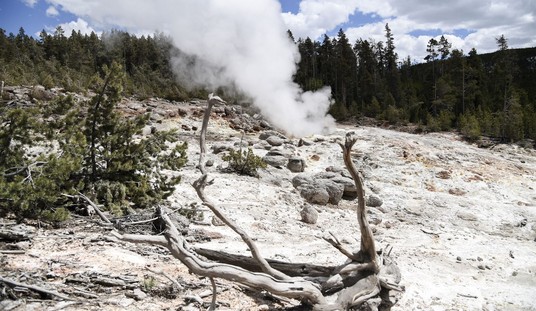

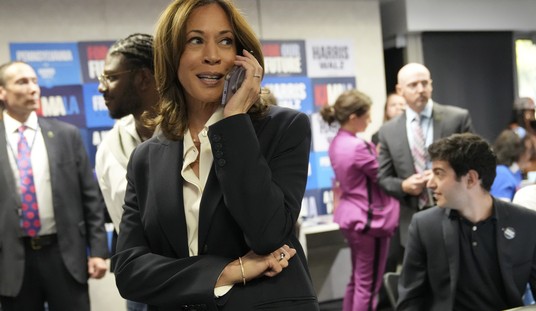

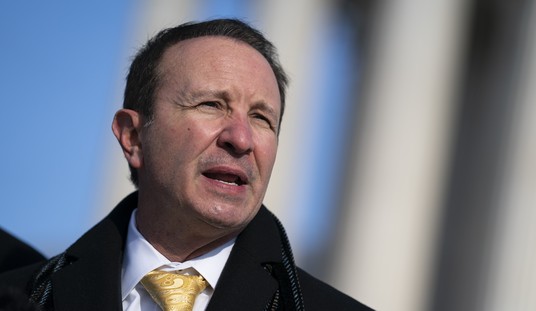
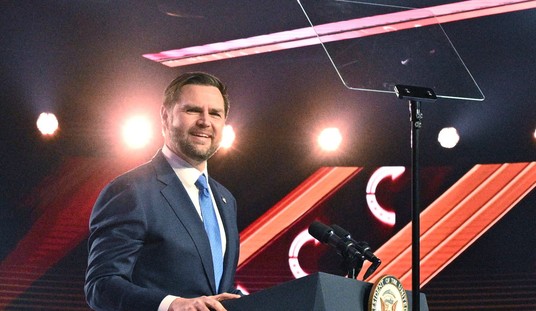




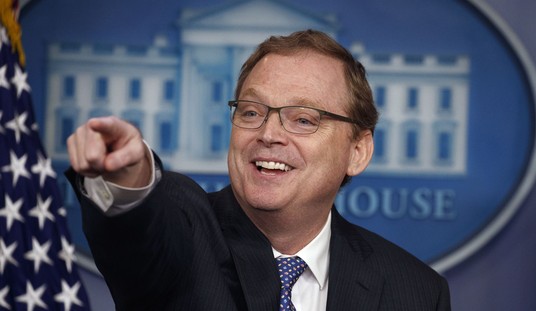
Join the conversation as a VIP Member